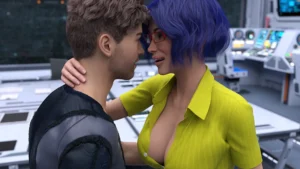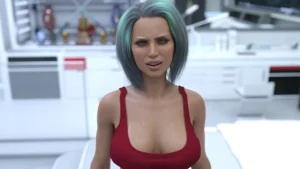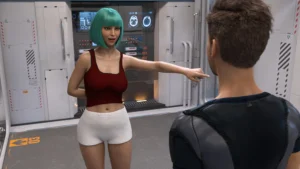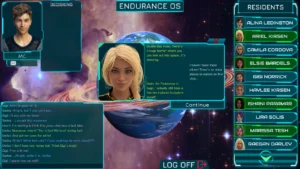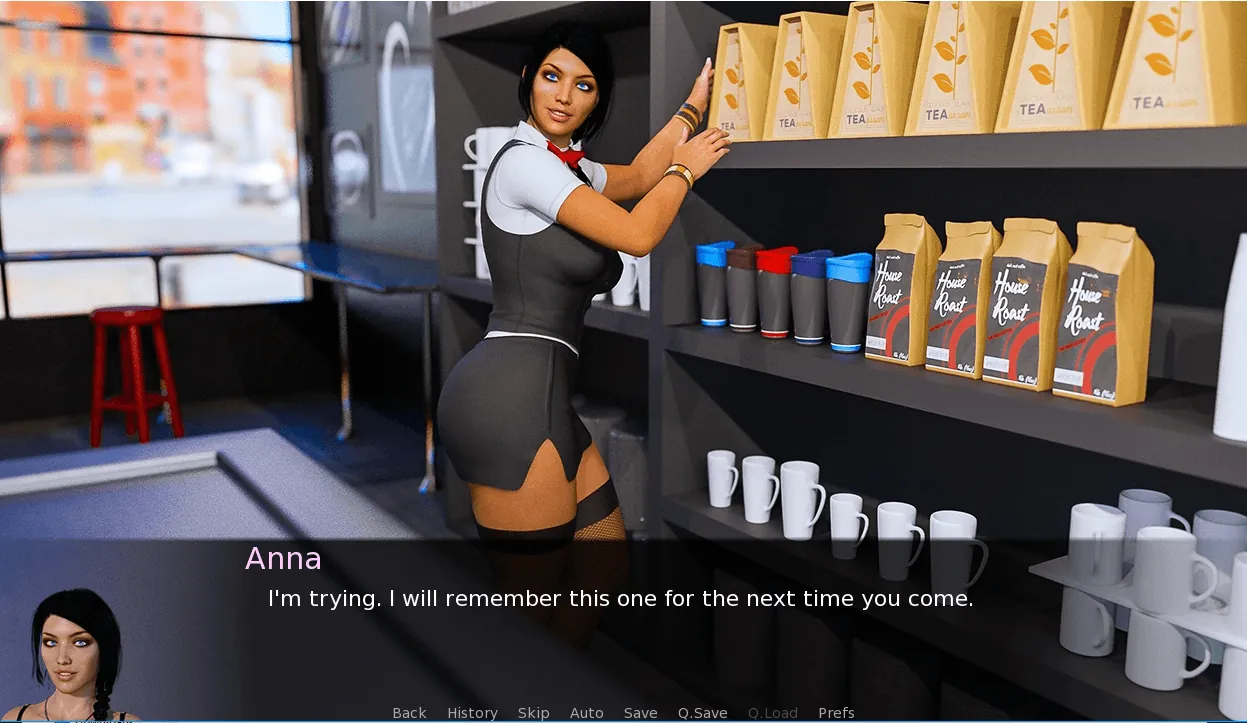
Stranded in Space
Play Stranded in Space
Stranded in Space review
Exploring the Unique Narrative and Player Experience of Stranded in Space
If you’ve ever wondered what it’s like to be truly lost among the stars, Stranded in Space offers a one-of-a-kind adventure that blends gripping storytelling with mature themes. This game stands out not just for its adult content, but for the way it immerses players in a rich, evolving narrative aboard a spaceship filled with complex characters. Whether you’re curious about the plot, the choices that shape your journey, or the vibrant community around the game, this article dives deep into what makes Stranded in Space a memorable experience—far beyond the surface-level expectations.
What Is Stranded in Space?
Imagine waking up surrounded by the cold, sterile walls of a starship, the hum of the engines your only constant companion. You’re cut off from everything you’ve ever known, adrift in the infinite black with a handful of strangers. This is the gripping premise of Stranded in Space, a game that pulls you into its world and refuses to let go. 🚀 It’s not just a setting; it’s a pressure cooker for human drama, where every decision you make ripples through the lives of your crewmates. The Stranded in Space narrative is built on a foundation of isolation and the secrets people keep when they think no one is watching.
At its heart, the Stranded in Space story is a masterclass in tension and discovery. You’re not just a passenger on this voyage; you are an active participant in an unfolding mystery. Why is the ship really adrift? What happened to the original crew? And can you trust the people you now depend on for survival? The game expertly weaves these questions into a tapestry of personal struggles and shared peril, making the Stranded in Space gameplay an intensely personal experience from the very first moment.
### The Premise: A Ship Full of Secrets
The core of the Stranded in Space story is deceptively simple yet incredibly powerful. You are one of the survivors on a deep-space vessel that has suffered a catastrophic failure, leaving you marooned and alone. But the physical isolation is just the beginning. The true journey is internal, exploring the psychological toll of their situation. The ship itself is a character—a labyrinth of corridors, darkened rooms, and malfunctioning systems that hide the truth of what transpired. 🔍
This isn’t a simple survival simulator. The Stranded in Space narrative uses this high-stakes environment to explore mature themes with a surprising depth. We’re talking about trust, betrayal, grief, and the moral compromises people make when pushed to their absolute limits. The Stranded in Space mature content isn’t gratuitous; it’s integral to the world-building. It manifests in raw, emotional conversations, difficult ethical dilemmas, and the complex, sometimes flawed, ways the characters cope with their trauma. This approach gives the story a weight and realism that is often missing from the genre.
The genius of the setup is that your primary goal isn’t just to fix the ship; it’s to fix—or break—the people on it. Your mission is twofold: uncover the ship’s dark secrets while simultaneously navigating the volatile web of interpersonal relationships. Every system you repair might reveal a new clue, and every conversation might expose a hidden motive.
### Characters and Relationships: More Than Meets the Eye
If the ship is the stage, then the crew are the unforgettable actors bringing the Stranded in Space story to life. The Stranded in Space characters are far from one-dimensional archetypes. Each one is meticulously crafted with their own history, motivations, and personal demons. You’ll meet the seemingly stoic captain wrestling with guilt, the brilliant but socially awkward engineer, and the medic with a past that seems to follow her—all of them are trying to hold themselves together while everything falls apart. 👥
Your relationship with these characters is the true core of the experience. The Stranded in Space gameplay revolves around your interactions with them. Through branching dialogue trees and key decisions, you can choose to be someone’s confidant, rival, or even romantic partner. These relationships are dynamic; they shift and change based on your actions. A kindness shown in one chapter might earn you a crucial ally later, while a callous decision could see you locked out of vital information or even betrayed.
The Stranded in Space mature content is deeply tied to this character development. You’ll encounter conversations about loss, intimacy in the face of oblivion, and the psychological breakdown of individuals under immense stress. These moments aren’t just for shock value; they make the characters feel real, vulnerable, and deeply human. Getting to know them is one of the game’s greatest pleasures, and potentially, one of its biggest heartbreaks.
To give you a clearer picture of the complex web you’ll be navigating, here’s a breakdown of some key personalities and how your journey impacts them:
| Character | Role on the Ship | How Player Choices Affect Their Arc |
|---|---|---|
| Captain Eva Rostova | Commanding Officer | Your support can help her overcome her guilt, or your defiance can push her into authoritarianism, changing the ship’s entire chain of command. |
| Dr. Aris Thorne | Chief Medical Officer | Encouraging his unorthodox research can lead to a medical breakthrough, while dismissing it may cause him to become reclusive and withhold critical aid. |
| Engineer Jax Corbin | Systems Specialist | Trusting him with ship secrets can unlock powerful upgrades, but suspicion may drive him to work on dangerous side projects independently. |
| Lia, the Ship’s AI | Central Computer Intelligence | Your conversational style and ethical queries can influence her evolution, potentially leading her to become a empathetic ally or a cold, purely logical entity. |
### Gameplay Mechanics: Choices That Matter
Forget about simple good or evil options. The Stranded in Space gameplay is built around a system of Stranded in Space choices that exist in shades of gray. There is rarely a perfect answer, only a series of compromises with lasting consequences. The game brilliantly tracks your decisions, both big and small, weaving them back into the narrative in ways you might not expect until hours later. This is what gives the game its incredible Stranded in Space replay value. 🔄
The primary mechanic is dialogue. Every conversation is an opportunity to shape your story. Will you be diplomatic or confrontational? Forgiving or skeptical? Your tone matters just as much as the information you seek. A single off-hand remark can close off an entire character’s quest line or open up a new, hidden path you never knew existed. The Stranded in Space narrative is not a story you watch; it’s a story you write with every word you choose to say.
These Stranded in Space choices extend beyond dialogue. You’ll be faced with critical resource allocation decisions—do you divert power to life support or to weapons? Do you share limited rations equally or prioritize the most essential crew members? These aren’t abstract puzzles; they are moral quandaries that directly impact who lives, who trusts you, and what kind of leader you become. The Stranded in Space gameplay constantly forces you to weigh immediate survival against long-term consequences.
Pro Tip: Don’t reload a save just because a choice didn’t go your way! Some of the most memorable and poignant moments in the Stranded in Space story come from dealing with the unintended fallout of your decisions. Embrace the chaos!
Let me share a story from my own playthrough that perfectly illustrates this. Early on, I had to mediate a heated argument between Engineer Jax and Dr. Aris over a scarce power cell. Jax wanted it for a engine stabilizer he claimed would prevent future crises, while Aris insisted it was vital for his medical research into the crew’s worsening sleep disorders. I ultimately sided with Aris, believing the immediate health of the crew was paramount. Jax was furious, calling me short-sighted.
I thought that was the end of it. But two chapters later, during a critical ship-wide crisis, the stabilizer Jax had wanted to build would have been the difference between a smooth ride and a catastrophic system failure. Because I had denied him the part, he hadn’t completed it. We survived, but just barely, and at the cost of significant hull damage and a serious injury to another character. Jax never said “I told you so,” but the look he gave me was more powerful than any words. That single, early-game Stranded in Space choice had cascaded into a major gameplay and narrative event that I couldn’t have predicted. It was a stunning demonstration of how the game’s systems work in concert.
This depth is precisely what creates the phenomenal Stranded in Space replay value. Your second or third journey through the stars will be a completely different experience. You’ll meet characters you previously ignored, discover secrets you missed, and see entirely new story outcomes based on a different set of Stranded in Space choices. It’s a game that invites you back, promising that the story is never truly the same twice. The rich Stranded in Space characters and the impactful Stranded in Space gameplay ensure that every decision feels significant, making you the true author of your own interstellar survival epic. 🌌
Stranded in Space is more than just a game with mature themes—it’s a narrative-driven experience where every choice matters, every character feels real, and the community is as vibrant as the story itself. Whether you’re drawn by the promise of deep relationships, branching storylines, or the thrill of discovering new outcomes with each playthrough, this title offers something truly unique. Ready to embark on your own journey among the stars? Dive in, make your mark, and see where the story takes you. And don’t forget to share your adventures with the growing Stranded in Space community—your story might just inspire the next great crew tale.










